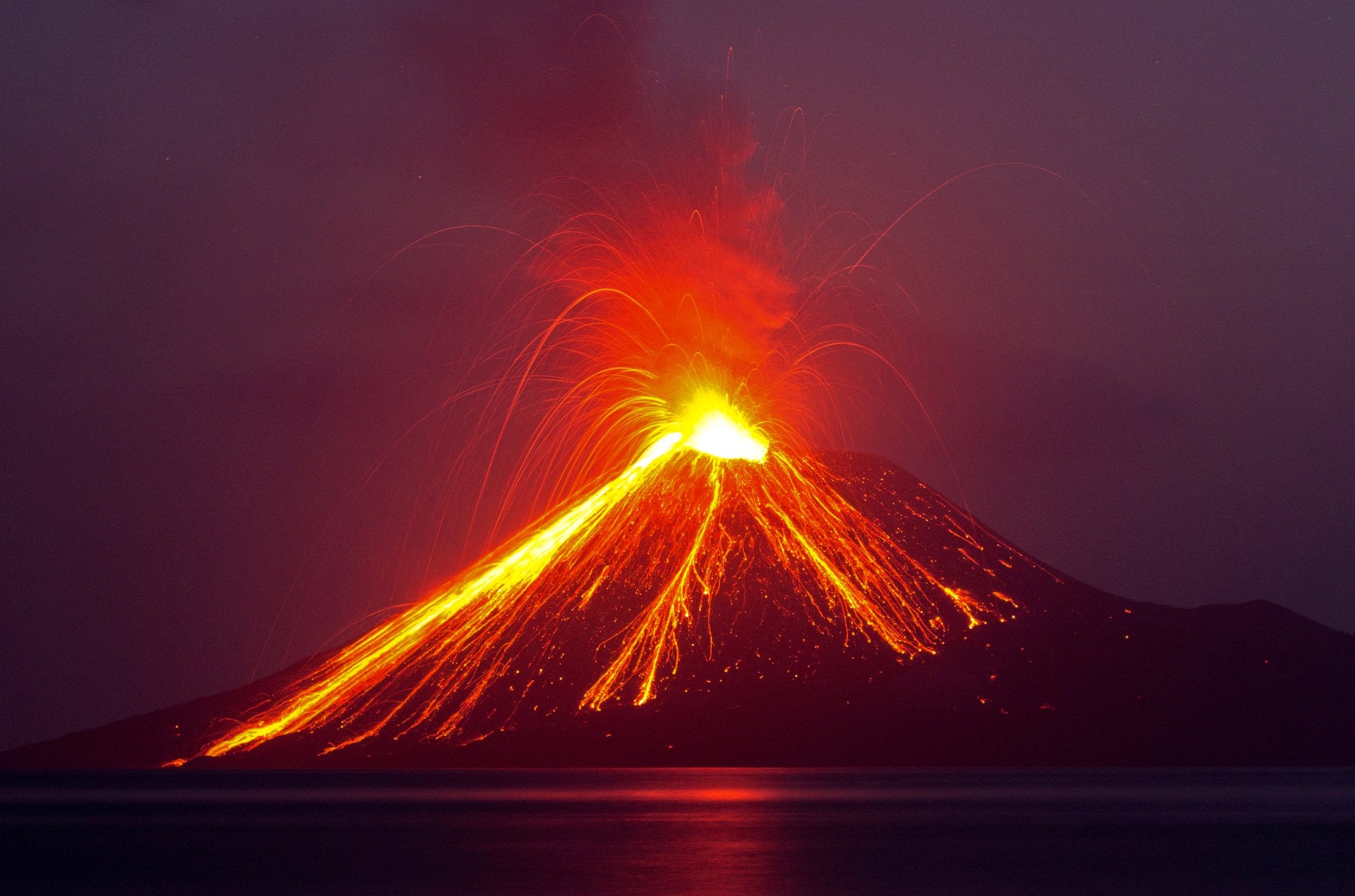Short-term cooling impact of massive volcanic eruptions increasing due to climate crisis, study suggests
But smaller eruptions are having a lesser cooling effect as our planet warms, writes Harry Cockburn


Cataclysmic volcanic eruptions have long been known to have had dramatic impacts on climates around the world over timeframes that sometimes last several years.
The period known as the Little Ice Age, in which average temperatures in the northern hemisphere fell from around the 14th century until the 19th century has partly been ascribed to heightened volcanic activity, while the 1991 eruption of Mount Pinatubo in the Philippines, caused global temperatures to fall for 2–3 years.
But as our planet warms due to the burning of climate-altering fossil fuels, scientists have begun to look at how this process interacts with volcanic eruptions, and whether the cooling effect of volcanoes will continue to be as pronounced.
A research team from the University of Cambridge and the UK Met Office found that as average global temperatures rise, an increasing gulf between how different size volcanoes impact the environment is occurring.
They found that massive but relatively infrequent eruptions are likely to increasingly drive global temperatures lower when they occur, while the cooling effects of smaller and medium-sized eruptions are expected to decrease dramatically – by up to 75 per cent.
As these smaller eruptions are far more frequent, the scientists said further research is required to ascertain whether the overall effect could lead to more global warming, or if the stronger cooling effect of larger volcanoes could ultimately have a greater bearing on temperatures.
Dr Thomas Aubry from Cambridge’s Department of Geography, the paper’s first author, told The Independent: “The question of how the climate crisis affects volcanic eruptions and their cooling effect is relatively new, and our and other groups are only just starting to gather evidence that indeed volcanic processes are affected by climate change.
“Our own study suggests that how climate change affects volcanic cooling is dependent on the type of eruption considered, with an amplification of the cooling for very large tropical eruptions happening 1-3 times per century, but a dampening of the cooling for relatively moderate tropical eruptions that occur on a yearly basis.”
The key reason the climate crisis is having an effect on how volcanoes impact temperatures is that the warmer atmosphere allows the plumes of ash and gas emitted by large, but infrequent, volcanic eruptions to rise ever higher.
Furthermore, the climate crisis will also accelerate the transport of volcanic material – in the form of small, shiny droplets called volcanic sulfate aerosols – from the tropics to higher latitudes.
Following large eruptions, the combined effect of these phenomena cause the haze created by volcanic aerosols to block more sunlight from reaching Earth’s surface, ultimately amplifying the temporary cooling caused by volcanic eruptions.
However, for smaller eruptions, the height of the tropopause – the boundary between the troposphere and the stratosphere above it – is predicted to increase, making it harder for volcanic plumes to reach the stratosphere.
Aerosols from volcanic plumes confined to the troposphere are washed out by precipitation in a matter of weeks, making their climatic impacts relatively minor and much more localised, the scientists said.
Despite this, Dr Aubry suggested that existing research does point towards a net cooling effect from volcanoes which could “dominate overall”.
He said: “Other studies have linked deglaciation and increases in extreme precipitation to an increase in eruption frequency and magnitude”, due to less ice cover over volcanically active parts of iceland for example.
He added: “And changes in ocean temperature should also amplify volcanic cooling. So I think most clues point towards climate change exacerbating the volcanic cooling effect, but more work is required to reach this conclusion.”
When Mount Pinatubo in the Philippines erupted in 1991, the effects were felt worldwide. The plume from the eruption – the second largest of the 20th century – reached more than 30 kilometres into the sky, forming a layer of global haze. In 1992, this haze caused global temperatures to drop by as much as 0.5C.
In comparison, human activities have warmed global temperatures by over 1C since 1850.
However, the effect of volcanic aerosols only persists for one or two years, while anthropogenic greenhouse gases will affect the climate for centuries.
“Beyond the data we have from recent eruptions like Pinatubo, we can also see the cooling effect of volcanoes going back two thousand years from the information contained in tree rings,” said Dr Aubry.
Volcanic plumes rise like hot air balloons, the team said. Following an eruption they keep rising to a height where they become naturally buoyant.
The study looked at how high in the atmosphere these plumes can rise and be transported globally under different warming scenarios.
The team used global climate models combined with volcanic plume models to simulate how the aerosols emitted by volcanic eruptions might be affected by climate change.
They found that for large eruptions like Mount Pinatubo, which typically occur once or twice per century, the climate crisis will cause the plumes to rise higher and the aerosols to spread faster over the globe, resulting in a cooling effect amplified by 15 per cent.
Changes in ocean temperatures are expected to further amplify the cooling, and the melting of ice sheets is also projected to increase volcanic eruptions frequency and size in places such as Iceland.
“Climate change isn’t something that’s coming – it’s already here, as clearly demonstrated by this week’s IPCC report,” said co-author Dr Anja Schmidt, also from the Department of Geography. “The effects of climate change and some of the feedback loops it can cause are becoming more obvious now. But the climate system is complex: getting a grasp of all these feedback loops is critical to understanding our planet and making accurate climate projections.”
“Due to more frequent and more intense wildfires, as well as other extreme events, the composition of the upper atmosphere is changing in front of our eyes, and so is our understanding of the consequences of these changes,” said Dr Schmidt.
“As we continue to emit greenhouse gases, the way that volcanic emissions interact with the atmosphere will continue to change and it is important to quantify these interactions in order to fully understand climate variability.”
The research is published in the journal Nature Communications.
Join our commenting forum
Join thought-provoking conversations, follow other Independent readers and see their replies
Comments
Bookmark popover
Removed from bookmarks